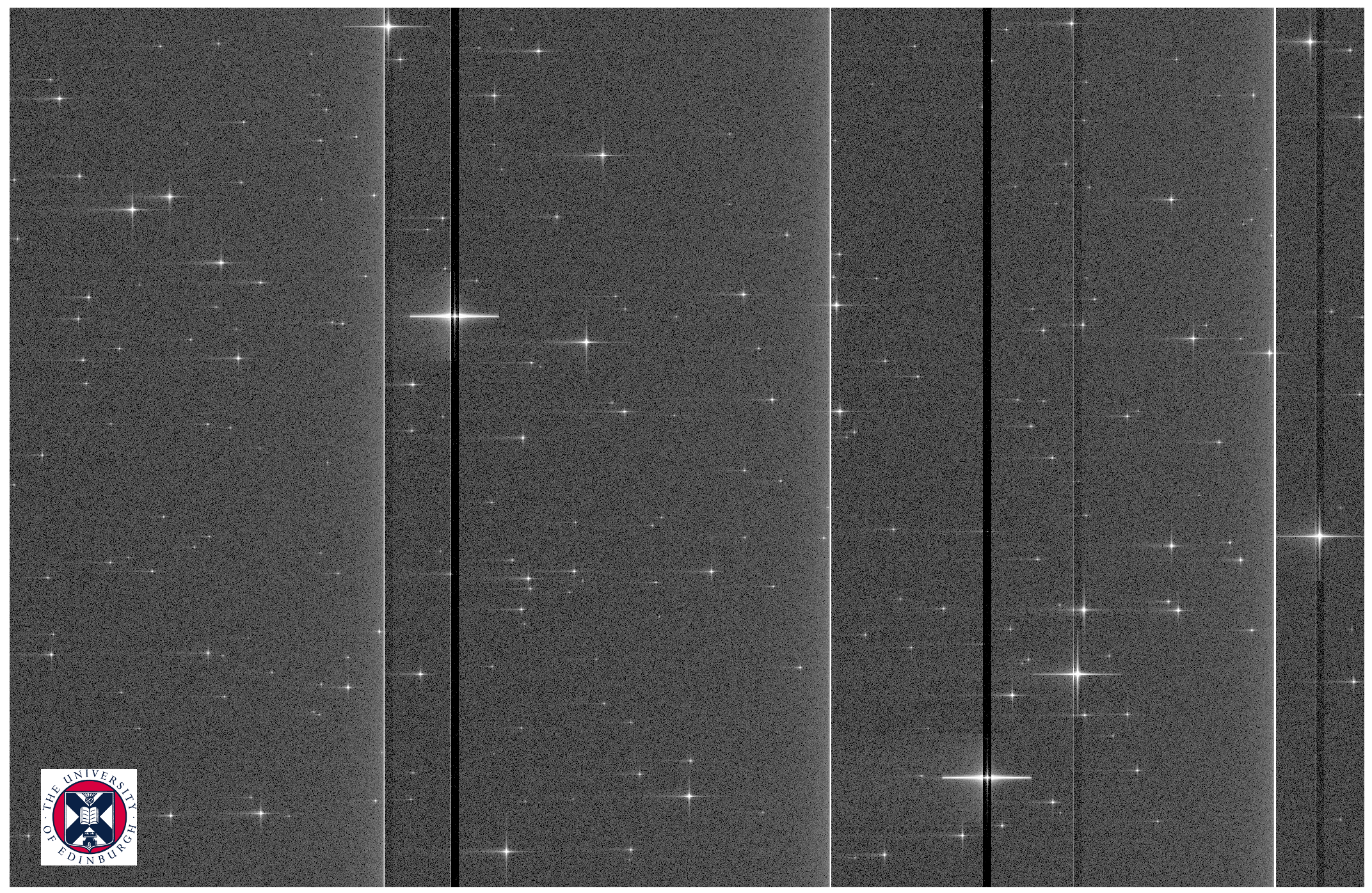|
VirtualScan is an informal simulator developed by CU5-DU10 to help primarily with their work on the problems of CTI mitigation and PEM bias non-uniformity. By focussing on the SM and AF instruments only, and using the Condor distributed computing system to harness spare CPU cycles in Edinburgh, significant periods of operation (hours) can be simulated at a CCD level.
One principle of VirtualScan is to, wherever possible, simulate effects and algorithms as closely as possible to their onboard implementation. Many effects appear in the observations, including non-nominal situations such as interactions between gate activations and charge injections. In this way, much of the complexity that we can expect to see in the real data can be modelled. These datasets of AstroObservations are therefore ideal for the technical and scientific validation of DU10 algorithms.
This image shows a typical scene over three seconds, generated from the GASS Operations Rehearsal #1 dataset. Not all effects are included here, for instance, only regular stars are simulated and no cosmic rays are added. We have, however, activated image-section and serial CTI at a level appropriate for mid-mission and have implemented nominal charge injection and gating strategies.
In the image we can see a variety of interesting features such as the charge injections (and the CTI trails after them), gate activations of various lengths and, of course, stars!
Image credit: Michael Davidson / University of Edinburgh
[Published: 29/06/2012]
|








































 Sign in
Sign in
 Science & Technology
Science & Technology

